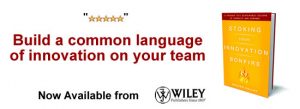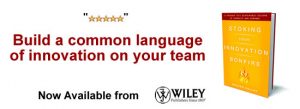Innovations in Digital Learning in 2011
 In November 2010, in his most important speech, Arne Duncan called for more productivity during this ‘new normal’ period of lower revenue. As our second ‘new normal’ year draws to a close, the challenges are numerous but the inflection is clear — the shift to personal digital learning is on and innovations in learning are accelerating! Eleven trends marked 2011:
In November 2010, in his most important speech, Arne Duncan called for more productivity during this ‘new normal’ period of lower revenue. As our second ‘new normal’ year draws to a close, the challenges are numerous but the inflection is clear — the shift to personal digital learning is on and innovations in learning are accelerating! Eleven trends marked 2011:
1. Poverty. The level of challenge was ratcheted up this year as most U.S. schools faced a double whammy of budget cuts and more kids in poverty. Despite heroic efforts, we lost a little ground on the equity front this year.
2. Collapse of Complexity. In several examples this year (Fukushima, the Eurozone, the U.S. Congress), we’ve seen complex systems in crisis after being stressed in unforeseen ways. No Child Left Behind (NCLB) was a complex system that needed annual adjustment to have a shot at working, but the disheartening political gridlock in America led to the inevitable unraveling of NCLB.
3. States matter. State leadership matters more than ever — particularly with the undoing of NCLB and the rise of online and blended learning — and we beat that drum from January to December. Most states are shifting to the Common Core, getting ready for online assessments and struggling to do what they said they would do in their 2009 Race to the Top application (with or without the winning check).
4. Protest. A lot of twenty-somethings were protesting the double whammy of unemployment and college debt (which, at $1 trillion, surpassed credit card debt this year). As Bob Mendenall of Western Governors University wrote, “Our nation needs greater productivity and higher quality from all our institutions of higher education.” 
In 2012 we’ll see the continued rise of new certificate programs like General Assembly and more online degrees particularly because the evidence from 125 studies is so positive.
5. Backdoor. Free apps and open content went viral in 2011 reshaping the learning landscape — making it more social, mobile, and personal — and putting a lot of pressure on print. Edmodo, a social learning platform, more than doubled its reach. High priest of free math, Sal Khan, was everywhere this year — score a big win for open education resources.
6. Mainstreaming. With Pearson’s acquisition of Connections Education in September, online learning became mainstream. Another indication: tabloid attack pieces from the Times. Good thing the folks at iNACOL are focused on quality.
7. Blends. The most important, indicative, and cited report of 2011 was The Rise of Blended Learning. We wrote about blending online and onsite learning every month including blended CBOs, blended restarts, and reasons teachers love blended learning. As Bob Wise said at an event during 2011, blended learning is the only possible way to address the academic, teaching and fiscal crisis facing the country.
8. New Frame. Guided by the December 2010 release of Digital Learning Now!, Florida, Idaho, and Utah removed barriers and increased options for kids. A more detailed Roadmap for Reform was released in October 2011 and will guide the next legislative session in states where lawmakers are focused on educational improvement.
9. Investment. Venture capital investments doubled (deals and dollars) from 2009 to 2011. Through November there were $9 billion in mergers and acquisitions this year, more than double the activity of two years ago. The philanthropic focus on innovation probably shows similar growth. More investment and new talent pouring into the sector means waves of innovation at a rate never seen.
10. Mobile. Web traffic from mobile devices outpaced desktop traffic this year. Phones and tablets started to show up in schools in pilots and a few bring-your-own-device environments. A $35 tab hit the Indian market.
 Put an big X on your calendar and call it an inflection point.
11. Getting Smart. There are probably a billion families focused on helping their kids get smart, so we launched a book and a blog with that name. Personal digital learning is changing the world and we think it is the most important and rewarding work anyone could engage in.
Despite the challenges, 2011 was a real turning point for innovations in learning.
image credit:guide2digitallearning

Don’t miss an article (3,700+) – Subscribe to our RSS feed and join our Innovation Excellence group!
 Tom Vander Ark is CEO of Open Education Solutions and a partner in Learn Capital. He is a former public school superintendent and chairs the International Association for K-12 Online Learning. Author of Getting Smart: How Personal Digital Learning is Changing the World, Tom blogs daily at Getting Smart. Contact him at Tom@GettingSmart.com or follow @tvanderark on Twitter.
Tom Vander Ark is CEO of Open Education Solutions and a partner in Learn Capital. He is a former public school superintendent and chairs the International Association for K-12 Online Learning. Author of Getting Smart: How Personal Digital Learning is Changing the World, Tom blogs daily at Getting Smart. Contact him at Tom@GettingSmart.com or follow @tvanderark on Twitter.
NEVER MISS ANOTHER NEWSLETTER!
LATEST BLOGS
The Second Coming of the Retail Health Clinic
There used to be a day when you could go to your local barber and get all sorts of wonderful…
Read MoreCan Microsoft out-innovate Google?
Microsoft announced today a round of updates to its Live Search offering. Searchengineland had a good story on the developments.…
Read More



I guess, there’s always this song that says: You Live, You Learn.. and innovation can be found in the most unusual places of them all. Now that 2012 is near, let’s see if we can come up with new ideas on where to look for new ideas. Happy New Year and More Success!